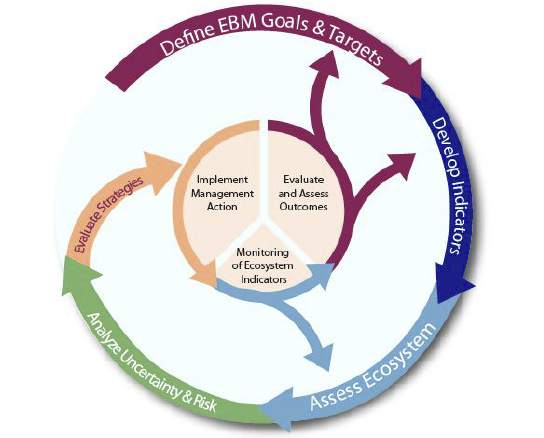NOAA is celebrating 10 years of implementing Integrated Ecosystem Assessments (IEA) with the publication of a special issue of the Coastal Management Journal, titled “Ten years of NOAA Integrated Ecosystem Assessment”. The special issue is comprised of seven papers that highlight how, over the past 10 years, IEA scientists have used the IEA approach to build relationships with stakeholders and managers, develop a community of practice and share lessons learned, and improve the process to integrate social, economic, ecological, and physical components of the ecosystem.
The strong collaboration that has developed between the Office of National Marine Sanctuaries and IEA program is highlighted in three of the seven articles. The paper titled “Using Integrated Ecosystem Assessments to Build Resilient Ecosystems, Communities, and Economies” describes ways that the IEA approach has been adapted to support and improve ONMS condition report and management plan development for sanctuaries in multiple regions. “Place-Based Ecosystem Management: Adapting Integrated Ecosystem Assessment Processes for Developing Scientifically and Socially Relevant Indicator Portfolios” reviews how indicators (i.e., measures of key components of the ecosystem) were identified in seven case studies, including one focused on the collaboration between the California Current IEA (CCIEA) team and Monterey Bay and Channel Islands sanctuaries. This collaboration focused on the development of habitat-specific suites of indicators and conceptual models that were vetted with regional experts for relevance in tracking and reporting on sanctuary conditions.
Applying indicators to ecosystem assessments, such as sanctuary condition reports, as well as analyzing risks and evaluating management strategies, requires compiling, managing, analyzing, and communicating large amounts of data and information. “Improving the IEA Approach Using Principles of Open Data Science” highlights steps IEA partners and practitioners, including west coast sanctuaries, are taking to improve public access to scientific data, methods, and products. For further information about the special issue, see this web story.
